In a more general sense, it was a short sword that one could have at one's disposal at all times.
The particularity of this sword is to have a solid rapier blade and a thick iron hilt, with functional "finger rings".
It is therefore a real weapon and not a court sword like those that will appear during the 18th century.
BLADE: It is a solid rapier blade, of lozenge section. On each side, a central fuller on the first 16.5 cm near the guard.
On one side we can read in the gutter “………… M A R I A ………..” which obviously refers to the Virgin Mary
And on the other, we find “…… I N R I I…………” for “Iesus Nazarenus Rex Judaeorum” the doubling of the letter “I” (= “J”) was sometimes used anciently to emphasize the plural, although grammatically this usage is incorrect.
It is therefore a religious inscription which places the owner of the sword under the protection of Jesus and the Virgin Mary, and which therefore clearly signs the attachment of this man to the Catholic faith, at a time when the troubles linked to the wars of religion werere still present in memories.
The end of the blade has marks of oxidation.
Blade length = 79.5 cm Width near the guard = 2 cm, thickness near the guard = 0.7 cm Balance point 9 cm from the guard plate
GUARD: It consists of 2 shells,placed inside strongs outside ovale rings used to block the blade point of an enemy. This is similar to the technique found on the Walloon swords.
Decor of flower petals.
The cross of the guard is with inverted quillons, which are curved with respect to the transverse axis of the blade. The finger rings are fully functional, indicating early manufacture.
POMMEL : it has a flattened globular shape, very soft, which corresponds well to a grip with support on the back of the palm.
Obviously this sword was designed as "functional"
GRIP : It is made of wood, covered with a double iron wire filigree in chevrons. The "turk's heads" ferrules are present and in perfect condition.
In summary, this sword exudes an impression of efficiency, favoring solidity over frills.
This indicates probably a personal order by a nobleman who had experienced the rigors of the battlefield.
This sword should find a place, if not at a bedside, at least on a desk or in a library.
Ref D22-56


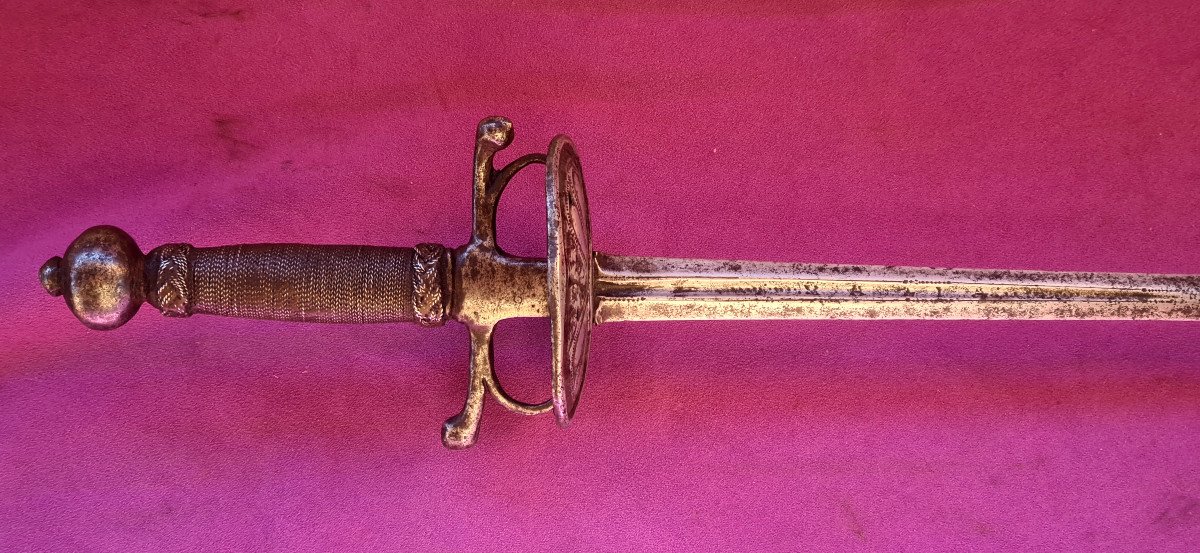

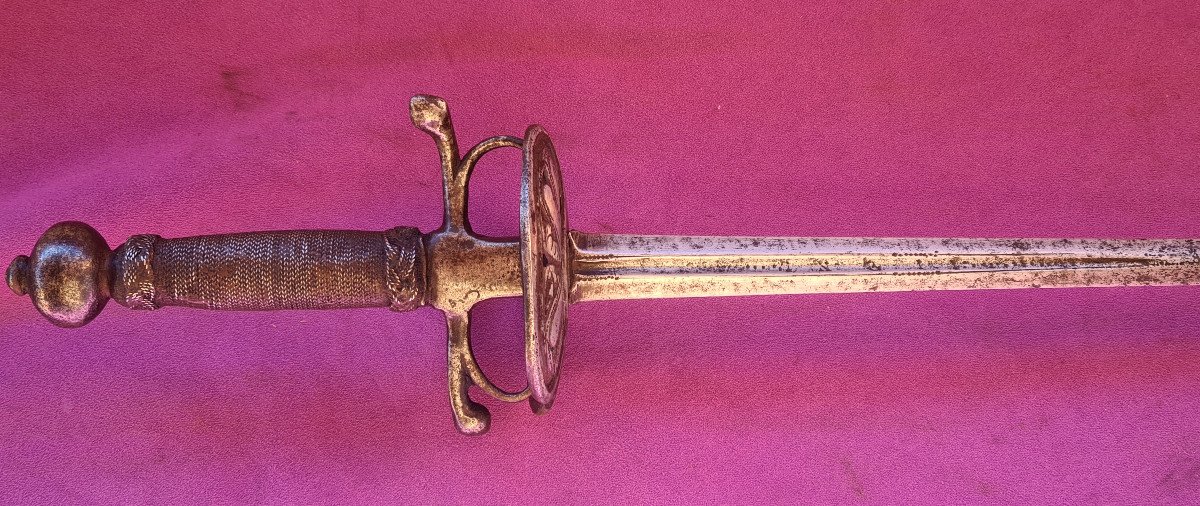
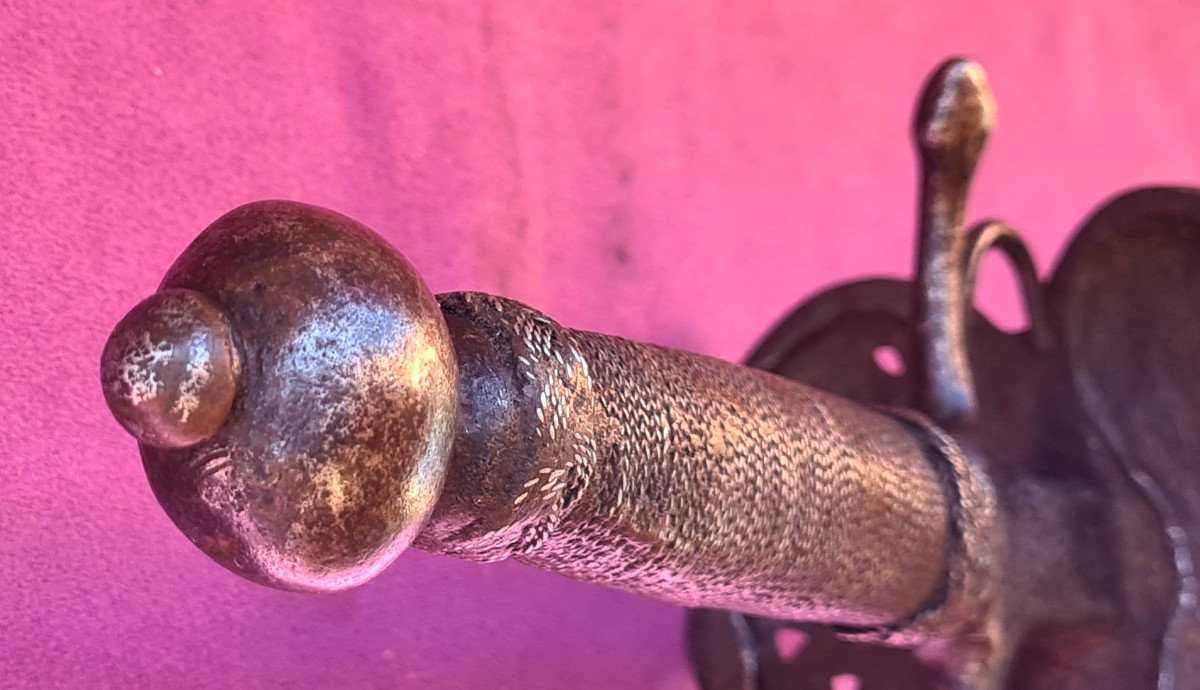


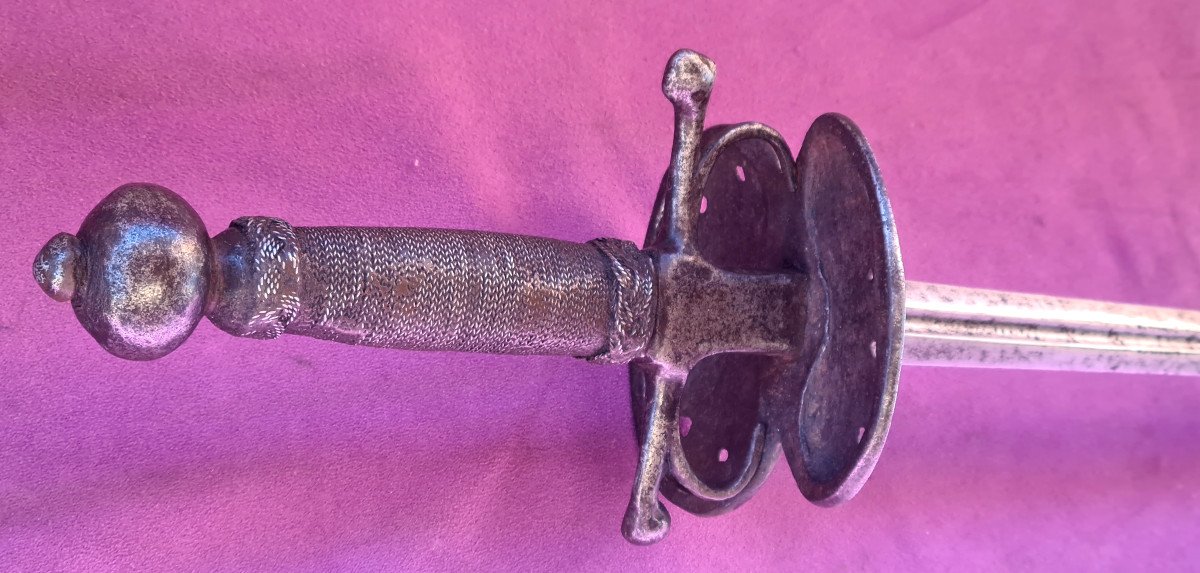

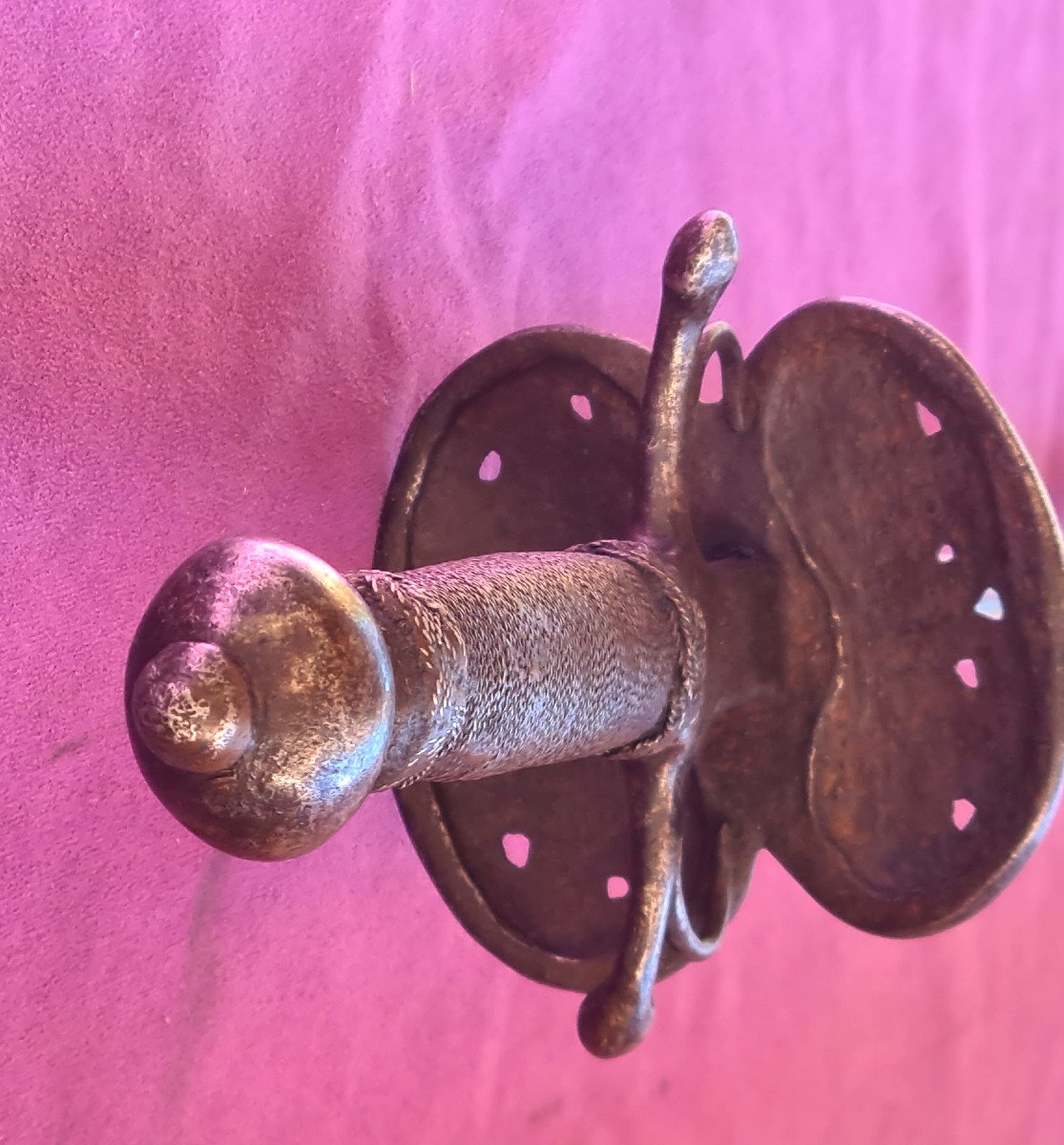

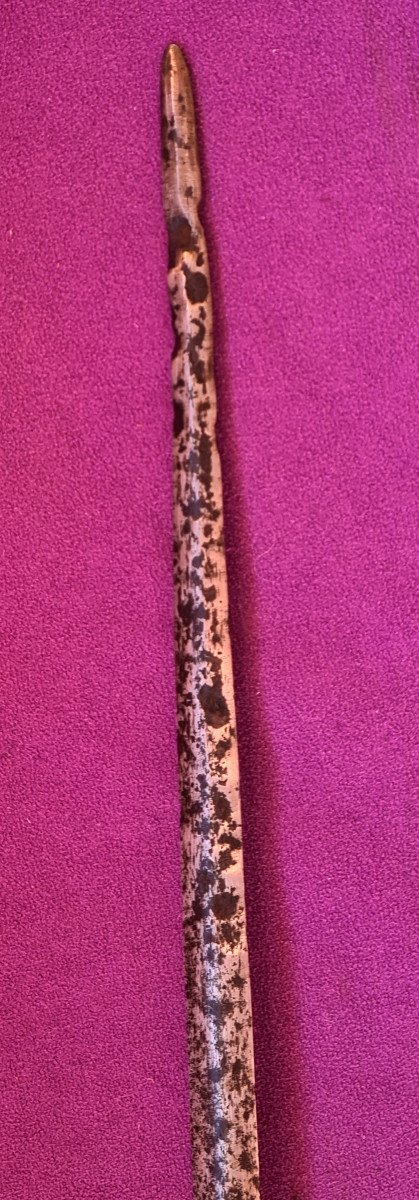
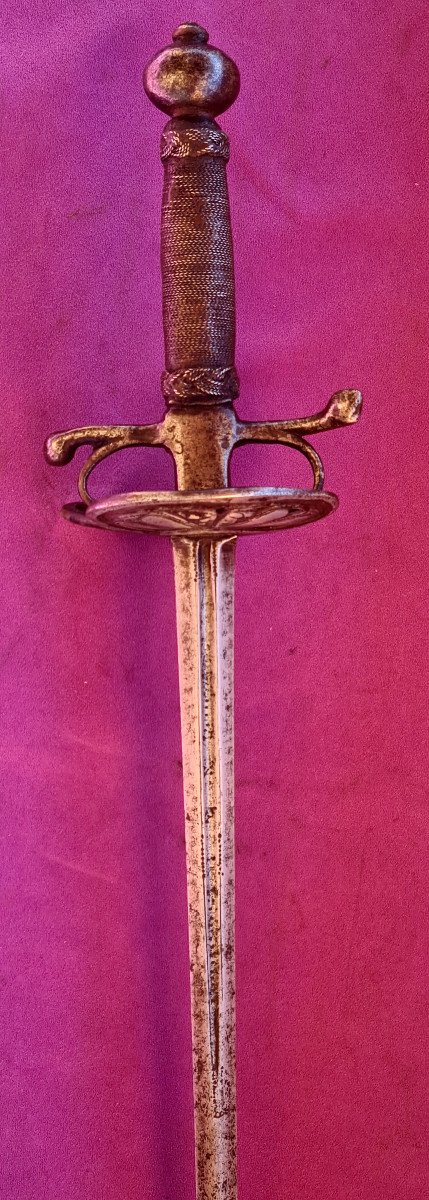













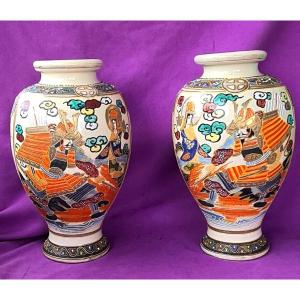
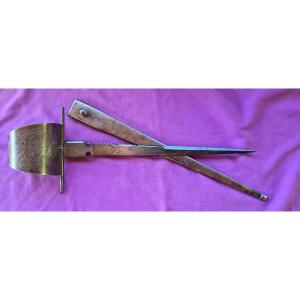
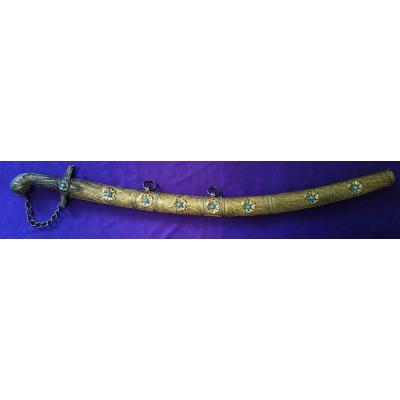

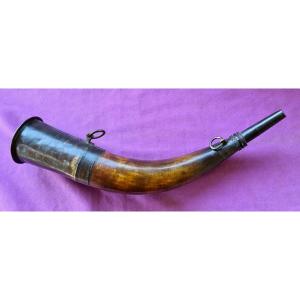

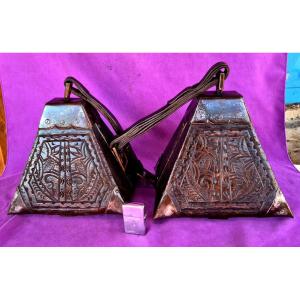
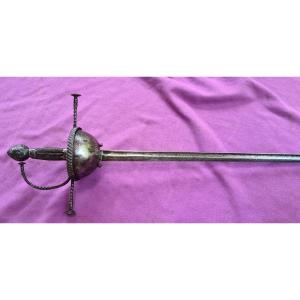
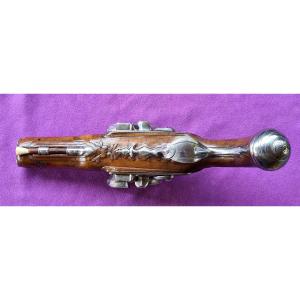

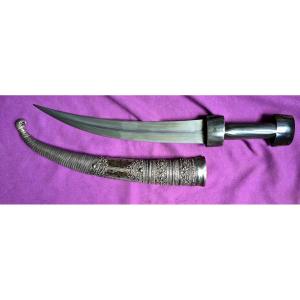






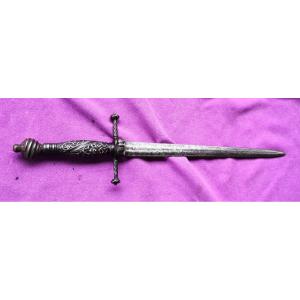





 Le Magazine de PROANTIC
Le Magazine de PROANTIC TRÉSORS Magazine
TRÉSORS Magazine Rivista Artiquariato
Rivista Artiquariato